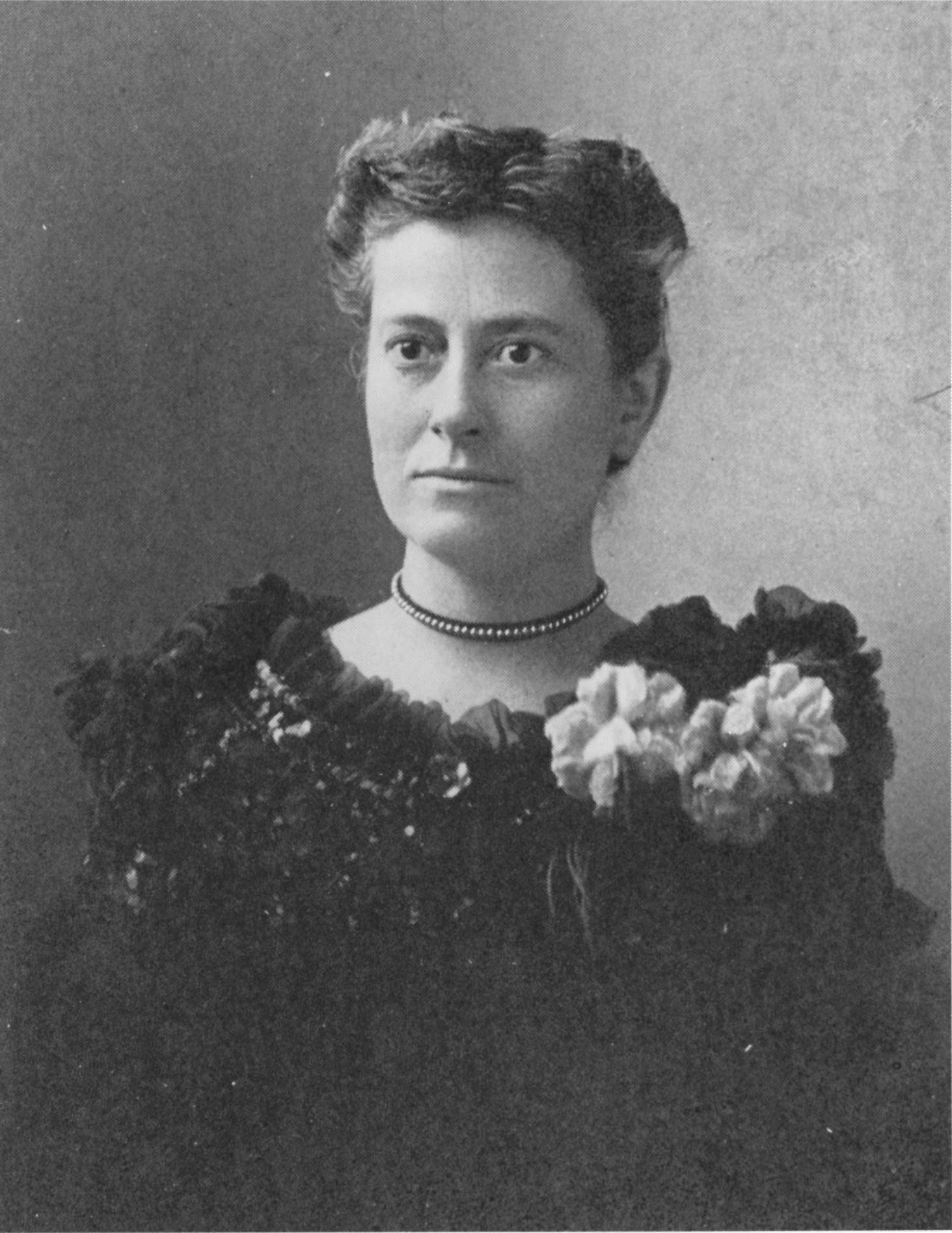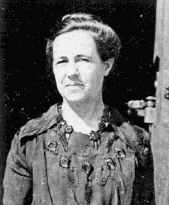I have never been one of these scientists that see themselves as women scientists rather than scientists. Similarly, I am not usually looking at women scientists' lives because they are women, but because they are scientists. Some would disagree with me on that point, but this is an issue for a whole different post.
Nevertheless, these women, the first modern day women astronomers, caught my interest while reading a popular physics book. Maybe this was because up to that point I kept reading only about men, so when I read about a woman, I paid extra attention. I know this is not directly related to the theme of this blog, but I thought I should write something, just in case you do not know about them.
You can see what Pickering looked like in this later photograph - I have included the caption from the source since it shows that these women were educated (https://www.cfa.harvard.edu/~jshaw/pick.html):Nevertheless, these women, the first modern day women astronomers, caught my interest while reading a popular physics book. Maybe this was because up to that point I kept reading only about men, so when I read about a woman, I paid extra attention. I know this is not directly related to the theme of this blog, but I thought I should write something, just in case you do not know about them.
Women entered astronomy - a mostly forbidden field up to then - thanks toone man and one woman. The man was Edward Charles Pickering who became director of the Harvard College Observatory in 1877. The woman was Anna Mary Palmer, the wife of Henry Draper whose intention was to photograph the entire night sky. Henry Draper did not manage to do so before he died, so his wife donated money to the Harvard College Observatory after his death.
Edward C Pickering decided that women would be better to complete this monumental task, so he hired his "Harem" or his "Computers". Yes, you read right. These women were called "computers". I find this awful for some reason. Others might find the 'Harem' term worse. At least the term harem shows they are women, whereas computers are neutral. Anyway, Pickering hired approximately eighty women during his directorship at Harvard College Observatory, which was amazing for that time (link). Saying that, they earned 25 cents per day, which was less than what the secretaries at the university earned, so by hiring them he also saved money. These women were responsible of catalogueing, indexing, examining and caring for the new photographic plates, identifying the stars on them and then calculating their positions.
Edward C Pickering decided that women would be better to complete this monumental task, so he hired his "Harem" or his "Computers". Yes, you read right. These women were called "computers". I find this awful for some reason. Others might find the 'Harem' term worse. At least the term harem shows they are women, whereas computers are neutral. Anyway, Pickering hired approximately eighty women during his directorship at Harvard College Observatory, which was amazing for that time (link). Saying that, they earned 25 cents per day, which was less than what the secretaries at the university earned, so by hiring them he also saved money. These women were responsible of catalogueing, indexing, examining and caring for the new photographic plates, identifying the stars on them and then calculating their positions.
Of these women, four have really stood out. You can find more details in Wikipedia, so I will just write a few words for each, the points which I found most interesting (the quotes are from https://www.cfa.harvard.edu/~jshaw/pick.html):
1. Williamina Paton Stevens Fleming (1857-1911)
Born Scottish, she moved to the US with her husband who then abandoned her and her unborn child, so she became the Housekeeper of E. Pickering, who then hired her as one of his team. In nine years, she catalogued more than 10,000 stars, discovered 59 gaseous nebulae (including the Horsehead), over 310 variable stars, and 10 novae.
Fleming was placed in charge of dozens of women hired to do mathematical classifications and edited the observatory's publications. She devised her classification system which divided the stars into classes based on “the complexity of the spectrum lines and bands and the strength of the spectral lines due to hydrogen”.
In 1890, the first Henry Draper Catalogue was published in the Annals of the Harvard College Observatory. It contained most of the stars visible to the unaided eye, a total of 10,351 stars. Though Fleming was not listed as an author, Pickering did acknowledge her contribution to the work. She was also widely recognized by the astronomical community.In 1899, Fleming was given the title of Curator of Astronomical Photographs and in 1906, she was made an honorary member of the Royal Astronomical Society of London, the first American woman to be so selected.
Antonia Maury (1866–1952)
While at Harvard College Observatory, Draper's wive's nice, Antonia Maury, observed stellar spectra and published a catalogue of classifications in 1897. During Maury’s cataloguing work, she rearranged Fleming’s scheme to reflect the temperatures of stars. She further refined the sequence by adding another “dimension” to describe the spectral lines. Pickering, disagreed with Maury’s system of classification and explanation of differing line widths, so she left. However, Ejnar Hertzsprung realized the value of her classifications and used them in his system of identifying giant and dwarf stars.
In 1908, Antonia Maury returned to Harvard where she remained for many years. Her most famous work there was the spectroscopic analysis of the binary star Beta Lyrae, published in 1933. In 1943, Antonia Maury was awarded the Annie Jump Cannon Award in Astronomy by the American Astronomical Society.
Annie Jump Cannon (1863–1941)
Since 1896 Cannon’s duties included cataloguing variable stars and classifying the spectra of stars in the southern hemisphere for the Henry Draper Catalogue project, the counterpart to Maury with the northern hemisphere. Cannon took over the duties as Curator of Astronomical Photographs when Fleming died in 1911.
Possibly due to her deafness, Cannon was “recognized even during her lifetime as the world’s expert in identifying and classifying stars, with incredible accuracy and speed.” By the time of her death, she had classified up to 350,000 stars, at a rate of up to 300 per hour.
Annie Jump Cannon also negotiated a compromise between the two systems of Fleming and Maury and put an end of the disagreement. According to her system stars are divided into the spectral classes O, B, A, F, G, K, M. The mnemonic of "Oh Be a Fine Girl and Kiss Me" was developed as a way to remember it. Her category scheme was so “user-friendly,” it was officially adopted as the standard in 1910 by the International Astronomical Union. Today, with minor changes, Cannon’s system is known as the Harvard Spectral Classification.
Cannon was recognized by her peers for her contributions to astronomy. She received six honorary degrees, one from Oxford University, the first given to a woman, and was the first woman to receive the Draper Gold Medal. With the money she received from one award, the Ellen Richards Research Prize of the Association to Aid Scientific Research by Women, Cannon established an award to recognize contributions to astronomy by women.
Henrietta Swan Leavitt (1868–1921)
Leavitt was the woman I read about in my book, she was the one who lead me to all this. Like Cannon, Leavitt became deaf during her traveling. I find this really interesting! :):)
In 1902, Pickering hired her on the permanent staff at $.30 per hour. As an assistant at Harvard, she was given little theoretical work since Pickering did not like his female staff to pursue such endeavors. Instead, she was given the position of chief of the photographic photometry department and was responsible for the care of telescopes. But she also worked with the rest of the team on the plates. Her task was to determine the magnitudes of stars. Her system was recognized by the scientific community as an important standard and in 1913, was adopted by the International Committee on Photographic Magnitudes.
But what she is most known for, was her work that lead to Hubble's discovery that the universe is expanding. By studying Cepheid variables in the Small Magellanic Cloud she determined the absolute magnitudes of stars. Her study led to the period-luminosity relationship.
How amazing could these women have been!!!!





